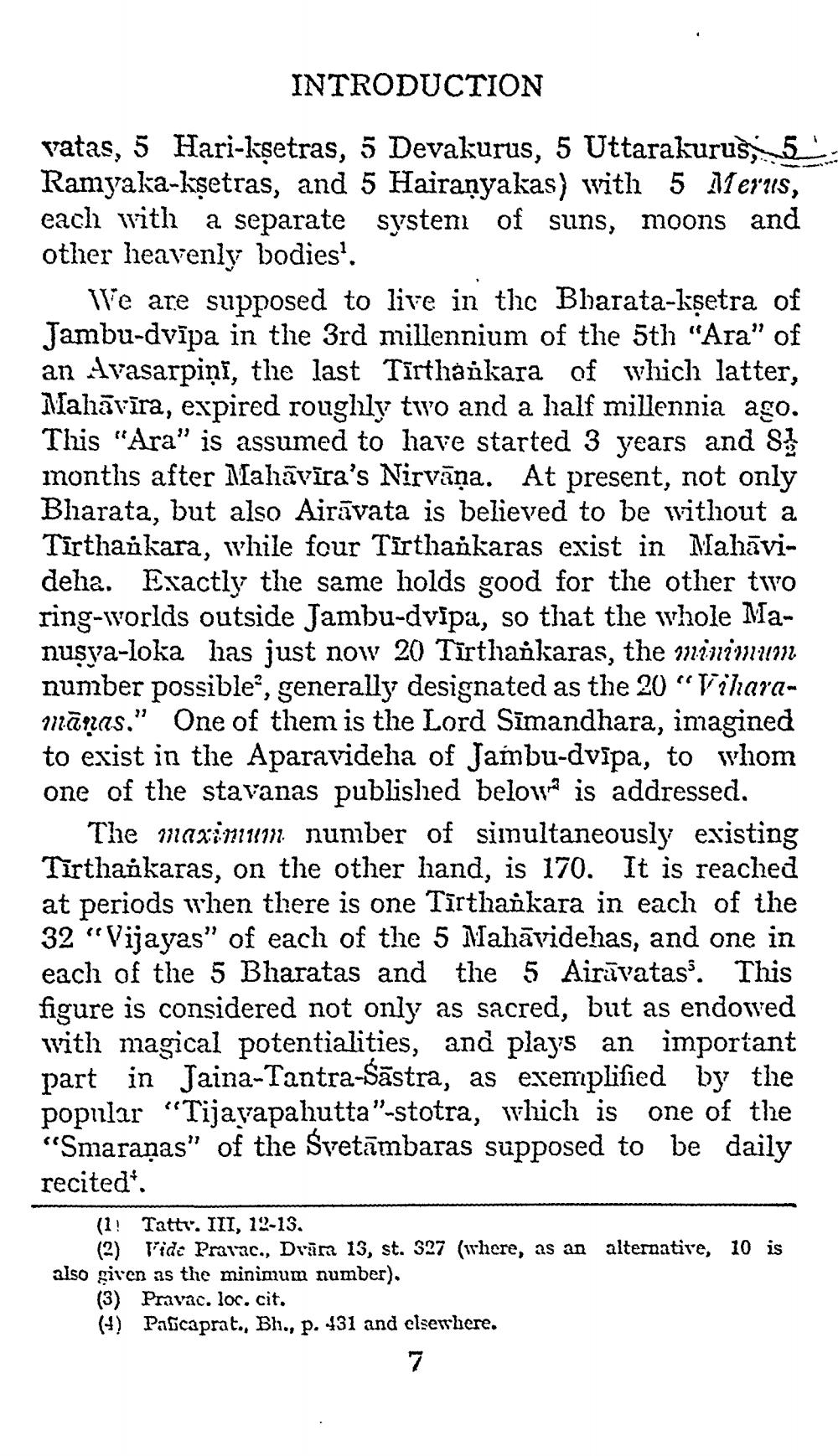________________
INTRODUCTION
vatas, 5 Hari-kşetras, 5 Devakurus, 5 Uttarakurus, 5 Ramyaka-kşetras, and 5 Hairanyakas) with 5 Nerus, each with a separate system of suns, moons and other heavenly bodies'.
We are supposed to live in the Bharata-kşetra of Jambu-dvīpa in the 3rd millennium of the 5th "Ara" of an Avasarpiņi, the last Tīrthänkara of which latter, Mahāvīra, expired roughly two and a half millennia ago. This "Ara" is assumed to have started 3 years and $ months after Mahāvīra's Nirvāņa. At present, not only Bharata, but also Airāvata is believed to be without a Tirthaikara, while four Tirthankaras exist in Mahāvideha. Exactly the same holds good for the other two ring-worlds outside Jambu-dvipa, so that the whole Manusya-loka has just now 20 Tirthankaras, the minimum number possible, generally designated as the 20 “Viharamāras." One of them is the Lord Sīmandhara, imagined to exist in the Aparavideha of Jambu-dvipa, to whom one of the stavanas published below is addressed.
The maximum number of simultaneously existing Tīrthankaras, on the other hand, is 170. It is reached at periods when there is one Tirthankara in each of the 32 "Vijayas" of each of the 5 Mahāvidehas, and one in each of the 5 Bharatas and the 5 Airavatas”. This figure is considered not only as sacred, but as endowed with magical potentialities, and plays an important part in Jaina-Tantra-Sastra, as exemplified by the popular "Tijayapahutta"-stotra, which is one of the “Smaranas" of the Svetāmbaras supposed to be daily recitedt.
(1! Tattı. III, 12-13.
(2) Vida Pravac., Drama 13, st. 327 (where, as an alternative, 10 is also given as the minimum number).
(3) Pravac. loc. cit. (4) Palcaprat., Bh., p. 431 and clsewhere.




